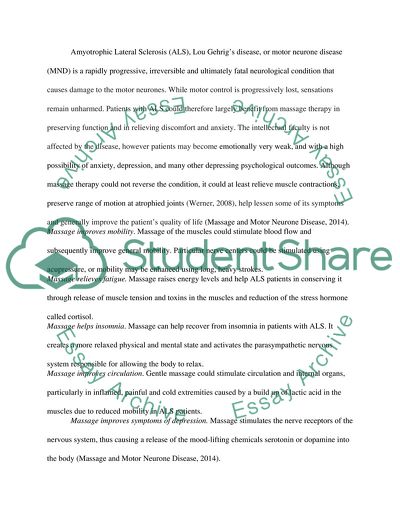The Effects of Massage Therapy on Persons with ALS Research Paper. https://studentshare.org/medical-science/1817749-effects-of-massage-therapy-on-amyotrophic-lateral-sclerosis
The Effects of Massage Therapy on Persons With ALS Research Paper. https://studentshare.org/medical-science/1817749-effects-of-massage-therapy-on-amyotrophic-lateral-sclerosis.


